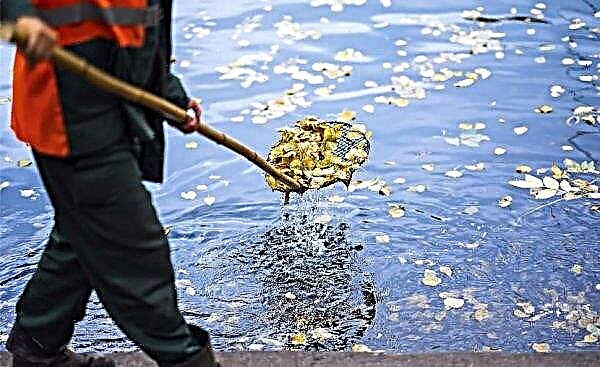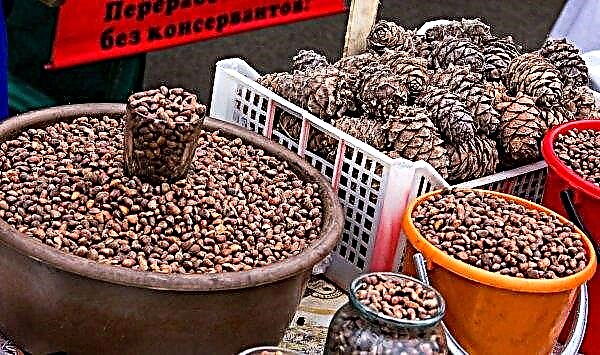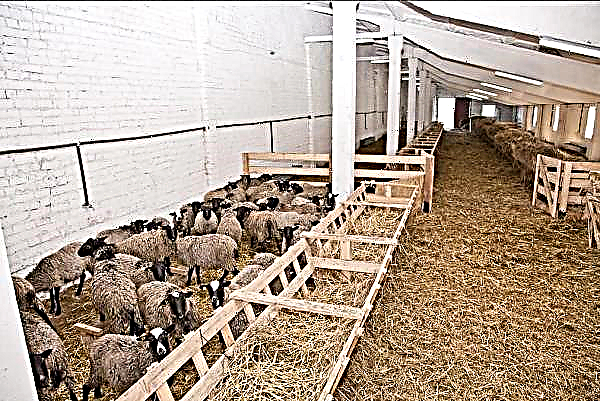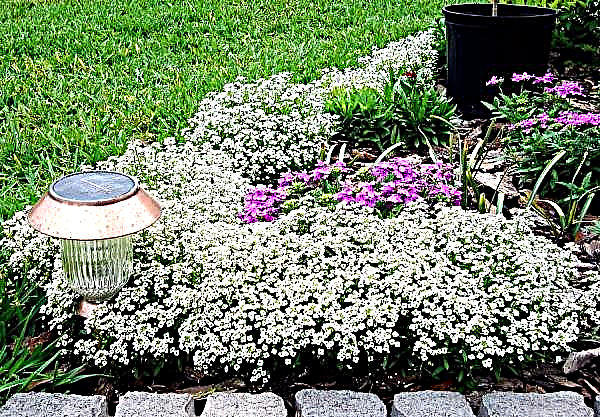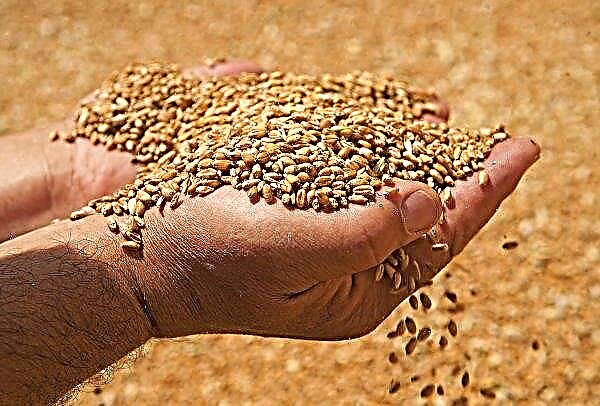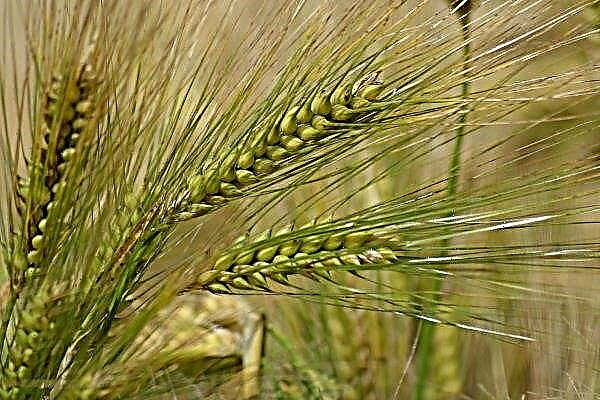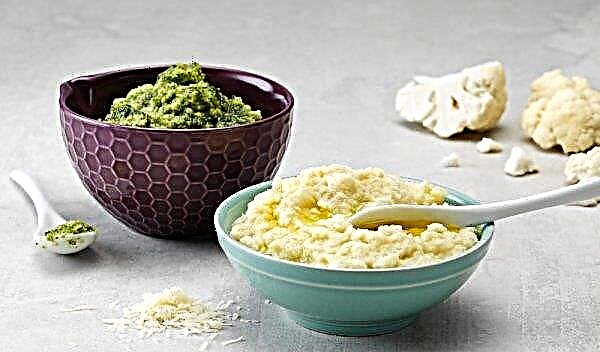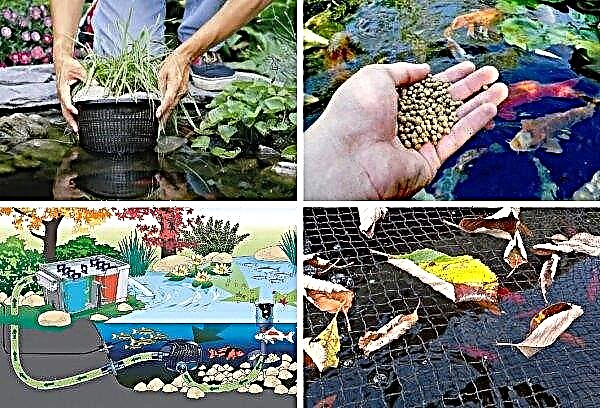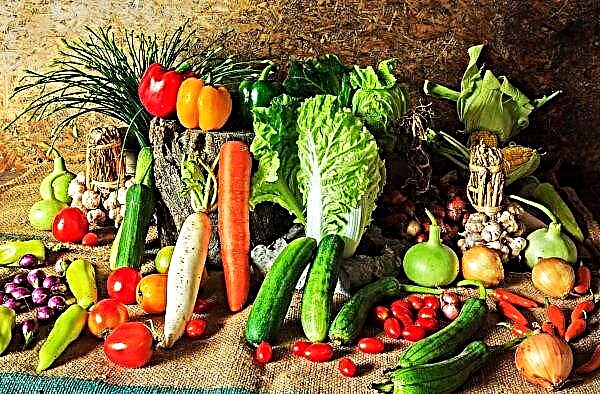Cucumbers grow very quickly, so many gardeners sow them immediately in open ground, without wasting time and effort on growing seedlings. At the same time, as practice shows, the seedling method allows you to get an earlier harvest of gherkins, beating nature for at least two additional weeks. About what problems can be encountered in the process of growing cucumber seedlings in a greenhouse or on a balcony, as well as why initially strong sprouts suddenly start to hurt, we will discuss this review.
The main causes of the disease seedlings of greenhouse cucumbers
Cucumber seedlings grown in closed soil face the same dangers that are characteristic of greenhouse cucumbers, because in both cases the plants are in confined spaces, that is, in the absence of free air circulation.

On the one hand, this mode is good in that it allows you to create a stable microclimate, protect seedlings from sudden temperature changes, hypothermia due to return frosts, as well as strong gusts of wind, harmful to a young plant, but, on the other hand, if the parameters of temperature, humidity and the lighting is unbalanced, the seedlings are weakened, wilted and eventually perish.
Important! A variety of pathogens can affect seedlings of cucumbers, including insects, fungi, bacteria and viruses, but in all cases weakened plants suffer from them, for which optimal conditions are not created.
"Three whales" guaranteeing healthy seedlings of cucumbers - temperature, lighting, humidity. Violation of any of these conditions means that the seedlings will be sick.
To temperature conditions, the culture makes the following requirements:
| At the germination stage | + 25 ... + 30 ° С |
| After emergence | + 20 ... + 23 ° С |
| Minimum temperature at night | + 18 ° С |
| Growth stopping point | + 15 ° С |
| Critical minimum threshold | + 10 ° С |
| Maximum allowable daily difference | 7 ° C |
When these temperature indicators are exceeded, the seedlings begin to stretch, turn yellow and dry out, if the temperature drops below acceptable limits, the bushes become sick and fade.
Video: Why dies seedlings of cucumbers
For normal development, a cucumber needs a lot of light, which when growing seedlings at home is usually almost impossible to provide (due to insufficient daylight hours during the period when seeds are sown). Therefore, the correct agricultural technology of this culture involves artificial illumination using LED or fluorescent lamps, and it is best at this stage so that the lighting is not white, but blue.
Important! Cucumbers grow at night in the dark. Therefore, it is necessary to provide seedlings with a period of absence of light for a minimum of 6 hours per day.
The basic rules for backlighting are as follows:
- artificial lighting should extend the daylight hours, and not divide it into parts, in other words, there should be no break between daylight and illumination;
- it is necessary to start backlighting immediately after the first shoots have appeared;
- the total daylight hours for seedlings should be 12 hours;
- the temperature regime during the backlighting period should correspond to the daytime, and not nighttime, otherwise the seedlings will begin to hurt.

Seedlings should be watered regularly, but carefully, avoiding overmoistening of the soil, to which young plants are very sensitive. Use for irrigation should only be well-maintained and warm (+ 24 ... + 25 ° C) water, since the supercooling of the roots is the first reason for their decay. As for air humidity, it is desirable to keep it within 65–75%.
 Spraying seedlings is allowed only in the evening or in the morning when the plant is protected from intense light, but it is better not to wet the sprouts themselves by moistening the air around the containers with seedlings, this will prevent sunburn of leaves and the development of major fungal infections
Spraying seedlings is allowed only in the evening or in the morning when the plant is protected from intense light, but it is better not to wet the sprouts themselves by moistening the air around the containers with seedlings, this will prevent sunburn of leaves and the development of major fungal infections
Another important element in the care of cucumber seedlings is regular ventilation. In this case, it is necessary to ensure that too cold air does not get on the seedlings, otherwise the seedlings may die.
In fact, the main causes of the disease of seedlings are somehow related to the failure to fulfill the conditions listed above. In particular, it could be:
- excessive irrigation, accompanied by stagnation of water in the soil;
- use of cold water for irrigation;
- waterlogging of leaves, including due to increased humidity in the room;
- Too cold or too warm air at one time or another;
- sudden changes in night and day temperatures;
- lack of airing;
- imbalance of nutrients in the soil (in particular, an excess of nitrogen, a lack of potassium and phosphorus, a deficiency of organic matter, etc.).

It must be understood, however, that the likelihood of a seedling disease is increased if the pathogen is already in the soil or in the seeds. Therefore, two more reasons should be added to this list - the use of poor-quality seeds or soil infected with pathogenic microflora for growing seedlings. Both of these reasons can be neutralized to a large extent by conducting a complete dressing (disinfection) of the seed material and soil mixture before planting.
The most common infectious diseases of cucumbers
Various infections can affect seedlings of cucumbers, the vast majority of which are fungal in nature, but bacteria and even viruses are also found among dangerous pathogens.
To be able to distinguish the symptoms of the most common diseases of young plants is very important if only because some of these diseases (for example, the cucumber mosaic virus) are incurable, which means that seedlings must be destroyed immediately with the land in which they grew, while others (for example , sunburn of leaves), on the contrary, are treated by timely elimination of the cause that caused them.

Root and root rot
A variety of fungi can cause rot and root rot, including Fusaria, Pithium, Rhizoctonia, Askohita, etc. A common symptom of damage is the destruction of the root system: if you remove the bush from the ground, you can see that the root has become dark and rotten. On the aboveground part of the plant, the disease does not manifest itself at a certain stage, although sometimes the lower part of the stem becomes brown. Over time, due to a lack of proper nutrition, the bush begins to turn yellow, wither, and eventually dies.
Important! External symptoms of root or basal rot appear when treatment can no longer give a result. However, diseases can be avoided by conducting preventive tillage before planting and creating an optimal microclimate for growing seedlings.
The development of root and root rot causes a combination of two factors - the presence of a pathogen in the soil and favorable conditions for it, in which high humidity primarily refers. If the seedlings are grown in an inappropriate temperature regime, it is easier for fungi to hit the plant.

White rot
White rot is an infectious lesion of the aerial part of the plant caused by the sclerotinia fungus (Sclerotinia sclerotiorum). This pathogen is found in the soil and is activated in a cool and humid environment. Thus, the main causes of infection are low air temperature and excessive watering of the substrate using cold water.
In order for the fungus to parasitize in a young plant, it needs to penetrate into the stem, which is greatly facilitated by accidentally breaking leaves or other damage to the sprout, in addition, if the planting is very thickened, the plants infect each other through the usual contact of the leaves.
Did you know? The cost of the most expensive cucumber in the world is about a billion dollars. True, this is not about a vegetable, but about a London skyscraper, nicknamed "Gherkin" (gherkin) for the unusual shape and green color of the glass.
White rot can be recognized by the following signs:
- A flocculent white coating appears on the aerial part of the seedlings, and the lesion sites rapidly increase in size.
- After a short time, the infected area becomes soft and as if moist.
- At the next stage, diseased leaves become covered with darkened and dark necrotic spots.
- Water exchange inside the plant is disturbed, as a result of which the bush withers and dies.

For the treatment of white rot, affecting adult cucumbers, fungicidal preparations such as Rovral, Sumilieks, Proton-Extra, Ordana, Abiga-Peak or Homa are used (the presence of copper in the composition contributes to the death of the fungus) However, if sclerotinia affects seedlings, the main task of the gardener is to destroy diseased bushes as soon as possible, completely eliminating their contact with other plants.
Gray rot
The symptoms of white rot are very similar to another infection of a fungal nature, called gray rot. This disease has its own pathogen - Botrytis cinerea fungus. Its presence on the plant is manifested by mold-like putrefactive plaque of gray color, which gradually spreads to the entire bush and entails its death.
Important! The beginning of the spread of gray rot can be recognized by the appearance on the leaves of brownish spots of a vaguely defined shape.
The main reasons for the development of the fungus:
- sharp daily temperature fluctuations, including overheating of seedlings during the day and overcooling at night;
- waterlogging of the soil or aerial parts of the plant;
- lack of airing;
- excess nitrogen in the soil.
Like sclerotinia, botritis lives in the soil and, striking a plant weakened due to improper care, if the distance between neighbors is not respected, it quickly spreads to the entire seedlings.

Therefore, at the first signs of infection, diseased plants must be removed and destroyed, and healthy bushes treated:
- Bordeaux mixture (4 g per 1 liter of water);
- copper sulfate in the same proportion;
- a mixture of copper sulfate, urea and sulfur zinc (respectively, 1 g of the first two components and 0.1 g of the third per 1 liter of water).
To prevent the development of gray rot can help the introduction of pulp from the chalk, diluted with water in a ratio of 1: 1. Systemic fungicides (Hom, Bayleton, Rovral, etc.) are usually not used to treat seedlings due to the economic inexpediency of such measures.
Ascochitosis
The people call this disease stem cancer, it is also known as black mycospheresis stem rot. The Latin name for the disease was due to its pathogen - the fungus Ascochyta cucumeris. Despite the very high risk of infection, it almost never manifests itself at the seedling stage, so the gardener may not worry at this stage.
However, one should know that Ascochite mycelium can persist both in soil and in seeds, and their viability is extremely high. At the same time, if sclerotinia are activated in a cold and humid environment, the combination of heat and humidity is maximally favorable for Askohita. Therefore, bright sunlight on the windowsill, where seedlings are grown, if it is not possible to ventilate the room due to the cold air outside the window, can cause “early” activation of Ascochyta cucumeris.

Typical symptoms of ascochitosis:
- Gray watery spots on the stem.
- At the next stage, the spots first darken, then dry and lighten almost to white.
- Cracking of the stem, often accompanied by the release of whitish or brown juice.
- The bush seems to be showered with numerous black dots.
- Large spots of irregular shape on the leaves - first brown, later lighter (chlorosis develops in the leaf plate - a characteristic symptom associated with the lack of chlorophyll production).
When identifying signs of ascochitosis in seedlings, plants are usually not. Possible fungus control methods can be used only at the stage of seed or soil disinfection and, as in the case of the diseases described above, suggest the use of fungicides containing copper. Another effective way to prevent infection is to introduce biological fungicidal preparations containing bacteria that are active against Ascochyta cucumeris into the soil. First of all, Trichodermin can be called as examples of such funds, and Baktiva also gives a good effect.
Did you know? Cucumber, along with garlic and melon, is mentioned in the Old Testament as one of the edible cultures of Egypt, which was longingly remembered by Jews wandering the desert in search of the promised land.
Anthracnose
Our ancestors called this disease a copperfish, possibly due to the main mineral used to treat it. Anthracnose affects not only cucumbers, but also other cultures of the pumpkin family, and is caused by marsupials, in particular, Colletotrichum lagenarium. The pathogen may be contained in the seeds, but it happens that its mycelia fall into the soil together with water (primarily rain) and are even carried along with air during ventilation.
Like most mushrooms, colletotrich feels best with high humidity, moreover, if it is less than 60%, the fungus completely loses activity. The temperature "preferences" of the pathogen are not so limited, therefore, the disease can develop both against the background of good heating of seedlings, and with its hypothermia.
The following signs indicate the onset of anthracnose development:
- The appearance of small brown depressions on the stem or root neck (sometimes the stem can even break at the site of damage).
- The distribution of light (brown or yellow) spots of unequal size along the periphery of the leaf plate, as well as along the veins.
- Drying of the inside of the spots and the loss of dead tissue fragments, resulting in cracks or holes appear on the leaves.
For preventive treatment of seedlings from anthracnose, a Bordeaux mixture, copper sulfate or copper oxychloride is used. At the first signs of illness, older plants are treated with systemic fungicides, such as Quadris, Topaz, Polygram, Abiga-Peak, Cumulus, Premikur Energy, etc.
Downy mildew
Like ascogytosis, downy mildew (or, in scientific terms, peronosporosis) seedlings are very rarely affected, due to the life cycle of the pathogen - the fungus Pseudoperonospora cubensis Rostowz, an oomycete class that has been active since about the second half of summer.
The characteristic symptoms of the lesion are:
- Light round or polygonal oily spots on the outside of the leaf, rapidly growing and merging into a single array.
- A grayish coating on the inside of the sheet.
- At the next stage, the leaf becomes dark and very brittle, crumbling at the slightest touch.

It makes no sense to treat peronosporosis, if it has already affected cucumbers at the seedling stage, but to prevent the development of infection in the soil, before planting seeds, it is worth adding biological preparations such as Fitosporin M, Vitaplan, Bactofit, Planriz, Gamair, Immunocytophyte, or Pseudobacterin-2.
Angular spotting or bacteriosis
Unlike all the diseases described above, the cause of the development of angular spotting is not fungi, but bacteria, namely, gram-negative microorganisms Erwinia tracheiphila, which are preserved primarily in the seeds.
Usually, the disease coincides with the beginning of flowering, the affected seedlings may look quite healthy in appearance. Bacteriosis can be recognized by the appearance on the leaves of strip-like yellowish oil strips, which eventually acquire a brown color, and then dry and crack.
For treatment, preparations containing copper (copper chloroxide, Bordeaux mixture, “Hom”) are used in combination with additional fertilizing of plants with potash fertilizers, and to prevent the occurrence of a problem, experts recommend carefully selecting and preparing seed material before planting, as well as using varieties with high immunity against bacterial infections, such as, for example, Dean, Whale, Cascade, Graceful, etc.
Important! An additional danger of bacteriosis is that its pathogen creates favorable conditions for the development of another disease, but of a fungal nature - cladosporiosis, or olive spotting.
Some scientists even believe that Cladosporium cucumerinum Ell et Arth alone, without the assistance of bacteria, is not able to infect the plant.
Olive spotting
Favorable conditions for the defeat of seedlings with olive spotting are:
- high air humidity (if this parameter is below 85%, the fungus does not develop);
- the use of cold water for irrigation with moistening of the aerial parts of the plant;
- sharp daily temperature fluctuations;
- cool (below + 10 ... + 13 ° С) air;
- drafts.
 Characteristic symptoms of cladosporiosis are the appearance of angular light brown spots on the leaves, starting from the periphery and the space between the veins
Characteristic symptoms of cladosporiosis are the appearance of angular light brown spots on the leaves, starting from the periphery and the space between the veins
Over time, the spots become olive-gray in the center and yellow at the edges. The lower part of the sheet is covered with a friable, like a transparent cobweb coating. As the disease develops, the spots begin to dry out and crumble, forming holes, in the end the plant dies.
The spread of cladosporiosis occurs very quickly, but the development of the disease can be stopped by:
- stop watering for a few days;
- adjustments to the temperature regime (if the seedlings are overheated, ensure its ventilation in the daytime, and when overcooling, on the contrary, move it to a warmer place).
Sometimes seedlings affected by cladosporiosis can be saved by treating it with Bordeaux mixture (1%) or Oxychoma (2 g per 1 liter of water).
Did you know? In 2000, Japanese scientist Toshuki Nakagaki proved that mold fungi have the rudiments of the mind. A rather complex labyrinth was built between the Physarum polycephalum fungus and a piece of sugar, which the fungus eventually overcame, and when a mycelium of the same fungus was used to solve a similar problem, the right path to sweetness was already deliberately and error-free.
Black mold
If the stalks of young cucumbers appeared a touch of dark gray or purple, most likely, the plant was struck by black mold (the causative agent is the fungus Corynespora cassicola). The leaves of diseased seedlings eventually become covered with a dark coating resembling a cobweb, and characteristic brown spots, due to which the disease is sometimes called a leaf burn.
 The main way to combat mold is prevention. Since the fungus is best spread in a humid environment, it is important to prevent a condition in which the aboveground part of the seedlings is covered with condensate and the soil surface remains wet
The main way to combat mold is prevention. Since the fungus is best spread in a humid environment, it is important to prevent a condition in which the aboveground part of the seedlings is covered with condensate and the soil surface remains wet
It is useful to mulch the earth around young bushes, and update the covering layer after each watering, for example, sprinkling each bush with dry sand. Also, one should not allow the bushes to lie on the ground, therefore, as the seedlings grow, they must be tied to a support.
Other fungal infections
In addition to the diseases discussed above, some other pathogenic fungi can affect seedlings of cucumbers, in particular:
| Disease | Pathogen |
| Powdery mildew | Sphaerotheca fuliginea; Erysiphe cichoracearum |
| Fusarium wilt | Fusarium oxysporum f. sp. cucumerinum |
| Verticillosis | Verticillium albo-atrum; Verticillium dahliae |
| Macrosporiosis (Brown spotting) | Macrosporium cucumerinum |
| Alternariosis | Alternaria cucurbitae |
All these problems are eliminated by the use of fungicidal preparations, which in their majority are quite toxic. Another, more effective way to grow healthy seedlings is to create the conditions under which pathogenic fungi cannot develop.

Cucumber Mosaic Virus
This is perhaps the most terrible infection that can affect seedlings, because, unlike other diseases, it is initially incurable. There are several types of viruses related to mosaic, in connection with which they also distinguish the diseases that they cause - tobacco, ordinary, white, green speckled. The main symptom of the disease is the appearance on the sheet plate of spots of different colors and localization, which somehow create a pattern that looks very similar to a mosaic.
The cucumber mosaic virus can persist in the soil for many years, so when signs of damage appear on seedlings, not only the plants, but also the land in which they are planted should be destroyed.
Methods for the prevention of cucumber seedlings
Some of the diseases affecting the seedlings of cucumbers are incurable, you can try to save young plants from others, but in any case, even before planting the crops in open ground with a seedling, problems have already begun to arise to obtain a rich and, what is important, environmentally friendly harvest of gherkins hard to count.
Important! Planting in open ground makes sense only completely healthy, strong and strong seedlings.
Therefore, it is much more important to prevent a situation in which young plants begin to hurt. To do this, you must follow simple rules:
- use only high-quality seeds that have passed preliminary testing and disinfection of seeds for planting;
- when choosing a variety or hybrid, give preference to those that show the highest resistance to the most dangerous fungal infections and other pathogens;
- to plant seedlings in a specially prepared soil mixture that meets the composition and structure requirements of this type of plant (it is advisable to purchase a substrate in a specialized store, rather than take land from the garden where cucumbers were grown last year);
- if necessary, carry out preliminary disinfection of the soil, as well as introducing biological antifungal drugs into it (for example, such as Fitosporin M, Haupsin, Trichodermin, etc.);
- in the process of growing seedlings, strictly follow the established recommendations on lighting, humidity, temperature and ventilation of the room;
- avoid direct sunlight and water drops falling on seedlings during irrigation;
- to plant seeds at a sufficient distance from each other, and if overly thickened seedlings appear, thin out them (leaves of adjacent plants should not touch);
- when the first signs of infection appear on one or more seedlings, immediately get rid of them in order to prevent the spread of the disease to other copies;
- in the process of caring for seedlings, use only clean and, preferably, disinfected tools;
- water the plants with slightly heated and previously settled water;
- thoroughly mulch the soil after watering in order to impede the development of pathogenic fungi on the surface;
- 2 weeks after emergence, carry out a single feeding of seedlings with organic matter (for example, chicken droppings or mullein), do not introduce other fertilizers before planting cucumbers in open ground;
- conduct hardening of seedlings before planting it in open ground.

To grow healthy seedlings of cucumbers is not so difficult, however, for this it is necessary to strictly observe several important rules. In case of violation of any of them, young plants begin to spend all their strength in combating adverse conditions and immediately become easy prey for numerous pathogenic microorganisms parasitizing on this type of plant. If the seedlings nevertheless started to hurt, trying to cure it is an ungrateful task: since cucumbers grow very quickly, it is better to get rid of the affected seedlings and repeat the whole procedure from the very beginning, of course, after doing serious work on the mistakes.

